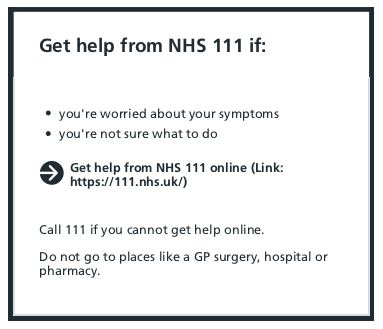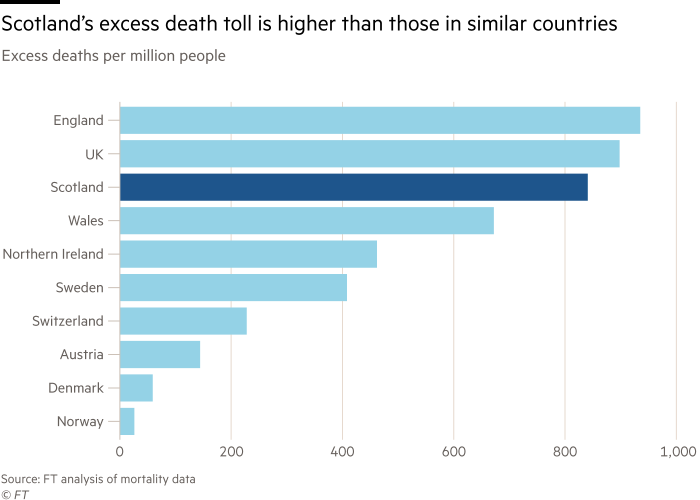
▪️How to tell if a Covid-19 patient is deteriorating at home?
A cross-discipline team reviews the signs and symptoms to watch for.
(1/10)
Share pls.
A cross-discipline team reviews the signs and symptoms to watch for.
(1/10)
Share pls.
2/10
The majority of Covid-19 resolves without event. Typical symptoms are similar to the cold or flu and tend to start improving after two or three days.
The majority of Covid-19 resolves without event. Typical symptoms are similar to the cold or flu and tend to start improving after two or three days.
3/10
The public should exercise the same judgement for who and when to contact if concerned as they did prior to the pandemic.
[The British Thoracic Society CAP guidelines remain unchanged.]
The public should exercise the same judgement for who and when to contact if concerned as they did prior to the pandemic.
[The British Thoracic Society CAP guidelines remain unchanged.]
4/10
Certain symptoms require urgent clinical contact:
➡️Shortness of breath
➡️Confusion
➡️Persistent, unremitting fever
Certain symptoms require urgent clinical contact:
➡️Shortness of breath
➡️Confusion
➡️Persistent, unremitting fever
6/10
Silent Hypoxia
Covid-19 pneumonia sometimes causes low oxygen levels without the feeling of breathlessness. It requires urgent medical attention. This is much more challenging in countries with no formal Covid triage or follow-up services, like the US or UK.
Silent Hypoxia
Covid-19 pneumonia sometimes causes low oxygen levels without the feeling of breathlessness. It requires urgent medical attention. This is much more challenging in countries with no formal Covid triage or follow-up services, like the US or UK.
7/10
Silent hypoxia may cause other symptoms, such as confusion or severe fatigue (exhaustion after minor exertion like climbing stairs).
Almost all patients feel unwell, albeit sometimes non-specifically. BUT…
Silent hypoxia may cause other symptoms, such as confusion or severe fatigue (exhaustion after minor exertion like climbing stairs).
Almost all patients feel unwell, albeit sometimes non-specifically. BUT…
8/10
...the only reliable way to check for Silent Hypoxia is by using a pulse oximeter. If in England or some parts of Scotland and have confirmed, symptomatic COVID-19 you may be eligible for oxygen monitoring at home (via primary care/111).
...the only reliable way to check for Silent Hypoxia is by using a pulse oximeter. If in England or some parts of Scotland and have confirmed, symptomatic COVID-19 you may be eligible for oxygen monitoring at home (via primary care/111).
9/10
If not eligible, you can buy your own pulse oximeter (accredited). More information here:
england.nhs.uk/nhs-at-home/co…
For clinicians using remote monitoring, there is a BMJ practice paper:
bmj.com/content/372/bm…
If not eligible, you can buy your own pulse oximeter (accredited). More information here:
england.nhs.uk/nhs-at-home/co…
For clinicians using remote monitoring, there is a BMJ practice paper:
bmj.com/content/372/bm…
10/10
Other observations (pulse, BP, RR) are useful for excluding disease mimickers (e.g. bacterial pneumonia or sepsis).
In the ISARIC cohort, despite a mortality of 30%: Obs in 60–69 years at presentation were RR: 22, HR: 91, SpO2: 95%, temp 37.3° and systolic BP: 130 mm Hg
Other observations (pulse, BP, RR) are useful for excluding disease mimickers (e.g. bacterial pneumonia or sepsis).
In the ISARIC cohort, despite a mortality of 30%: Obs in 60–69 years at presentation were RR: 22, HR: 91, SpO2: 95%, temp 37.3° and systolic BP: 130 mm Hg
A1
Other findings:
Chest X-rays were deemed to offer limited additional value to the community assessment.
Clinical examination was of unknown value (although, an 'eye-ball' assessment may be of use).
Blood tests are usually not required. [CRP was noted to be of some use < 75yrs]
Other findings:
Chest X-rays were deemed to offer limited additional value to the community assessment.
Clinical examination was of unknown value (although, an 'eye-ball' assessment may be of use).
Blood tests are usually not required. [CRP was noted to be of some use < 75yrs]
A3
The full review is available here.
Stay vigilant and look after each other.
Many thanks to my co-investigators: @DanLasserson @mattinadakim @stephenrthomas1 @FatmaMansab @adeebnaasan @PHcritique...
bmjopenrespres.bmj.com/content/8/1/e0…
The full review is available here.
Stay vigilant and look after each other.
Many thanks to my co-investigators: @DanLasserson @mattinadakim @stephenrthomas1 @FatmaMansab @adeebnaasan @PHcritique...
bmjopenrespres.bmj.com/content/8/1/e0…
• • •
Missing some Tweet in this thread? You can try to
force a refresh








